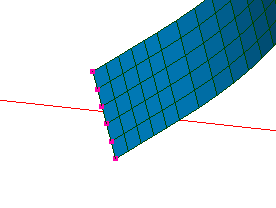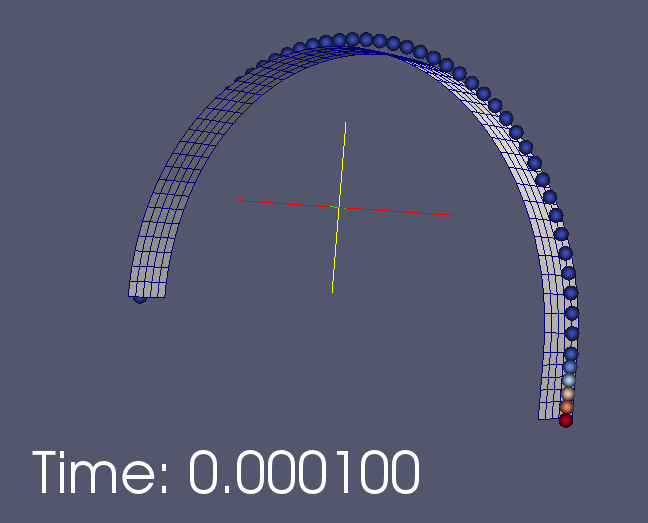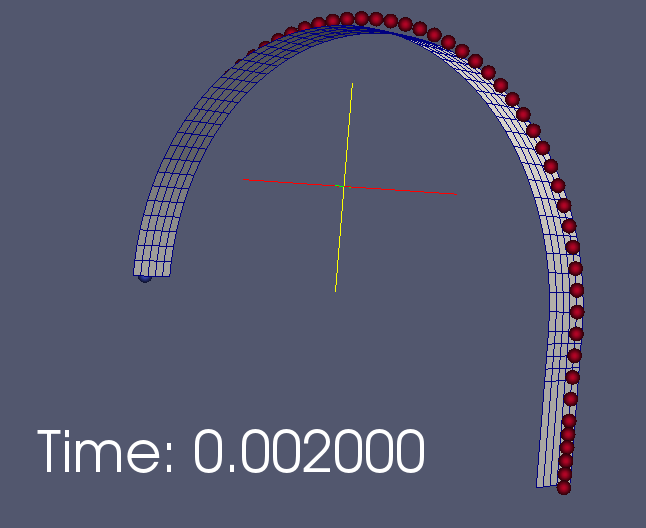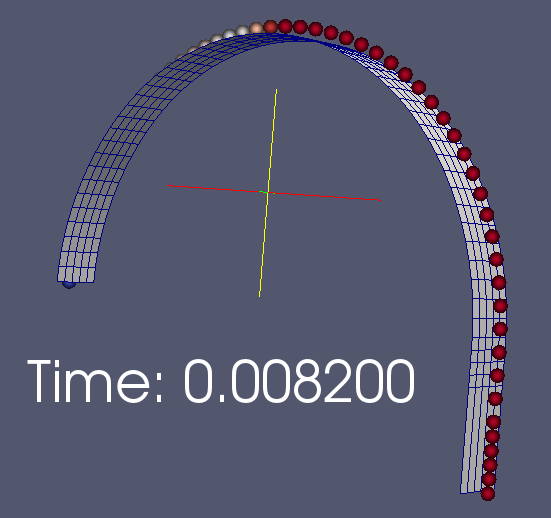2. Modeling A#
In this modeling, we seek to validate the good use of the link LCAB GLIS d’EPX in CALC_EUROPLEXUS. This link is activated starting with the RELA_CINE_BP load of AFFE_CHAR_MECA by giving the TYPE_EPX keyword the value « GLIS ».
2.1. Boundary conditions and loads#
The red bows in the illustration are embedded.

Figure 2: Embedded knots
The move \(\mathit{DY}=-\mathrm{3m}\) as well as the blocking of the rotation ddls are imposed on the nodes in red in the illustration.

Figure 3: Traction
This loading is imposed with the following multiplier function:
Time |
Coefficient |
0.0 |
|
0.002 |
1.0 |
1.0 |
1.0 |
2.2. Details#
Without the presence of connections between the cable and the concrete, the load would only have an effect on the 5 meshes at the end where the traction is applied. The LCAB GLIS link imposes a total kinematic relationship on the two nodes at the ends of the cable (or anchor nodes) and a partial kinematic relationship on the other nodes (no link in the direction of the cable).
The imposed load will therefore drive the anchor node with the concrete knots, which will pull on the entire cable.
The cable knots then move along the trajectory. For this test and its equivalent in EPX the validation is visual. SalomeMeca’s Para VIS module was used to visualize the movements of cable nodes over time.
Once this visualization was done, non-regression tests were added to test EPX. In order to validate the call of CALC_EUROPLEXUSà the link EPX LCAB GLIS, we test the same values as EPX.
A video would be more telling, but we show the distortion of this calculation at several moments.

|

|

|

|
2.3. Tested sizes and results#
These tests have a SOURCE_EXTERNE reference given by the corresponding EPX test.
Node |
Component |
Moment (s) |
Reference Value (m) |
Tolerance |
\(\mathit{NY10}\) |
|
0.002 |
|
|
\(\mathit{NY10}\) |
|
0.002 |
|
|
\(\mathit{NY10}\) |
|
0.006 |
|
|
\(\mathit{NY10}\) |
|
0.006 |
|
|
\(\mathit{NY10}\) |
|
0.01 |
|
|
\(\mathit{NY10}\) |
|
0.01 |
|
|